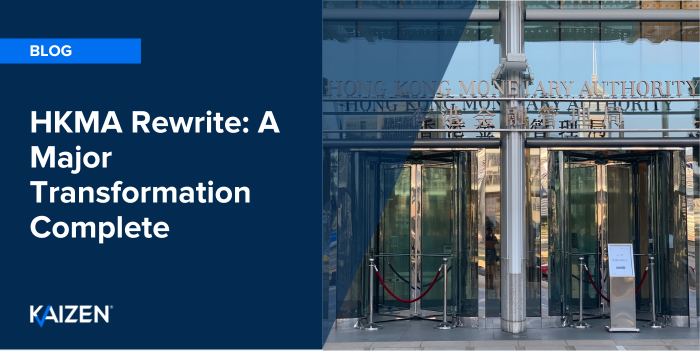HKMA Rewrite: A Major Transformation Complete

This week marks the completion of nearly three years of G20 regulatory reporting updates, starting with the CFTC Rewrite, followed by the EMIR Refit (EU and UK), JFSA, ASIC and MAS Rewrites, culminating in the most significant change yet: the HKMA Rewrite.
Why is it the most significant? Despite it having a fairly low profile compared to the other updates, the HKMA Rewrite goes well beyond the incremental changes we’ve seen with previous G20 refits/rewrites. The Hong Kong regulator has undertaken a comprehensive restructuring of its derivatives reporting framework, bringing it into line with other G20 jurisdictions.
What’s changed?
The rewrite delivers some genuinely welcome improvements.
- Fewer reportable fields. HKMA has streamlined the reporting burden significantly, reducing reportable fields from more than 300 down to 183 for trade reporting and just 34 for margin and collateral. This should make life considerably easier for operations teams managing daily submissions.
- Technical alignment. HKMA has moved from one of the most challenging message specifications to ISO20022 XML format. Firms that have already invested in this infrastructure for other G20 jurisdictions can leverage their existing systems rather than building from scratch. This alignment should help reduce both implementation costs and ongoing operational complexity.
- Requirements: New margin and collateral reporting requirements provide regulators with better visibility into the collateralisation aspects of systemic risk, while the adoption of Unique Product Identifiers (UPI) and making the Unique Transaction Identifiers (UTI) the primary trade ID, improves pairing and matching processes across the different G20 regimes.
What makes it different?
HKMA has retained some jurisdiction-specific requirements that set it apart. Unlike EMIR, they still require both legs of FX swaps to be reported (linked via ‘Swap Link ID’), and they’ve maintained broader CDS field requirements compared to JFSA and MAS.
On the positive side, there’s no need to navigate the clearing obligation and threshold determinations that were introduced in the EMIR Refit.
Worth the effort
While any major regulatory overhaul brings implementation challenges, this transformation represents a strategic win for the industry. The alignment with global standards means firms can build on existing regulatory reporting infrastructure rather than starting from scratch. The streamlined field requirements should reduce ongoing errors and operational friction, while positioning Hong Kong’s derivatives market infrastructure for continued growth.
For firms already reporting across multiple G20 jurisdictions, this harmonisation effort should ultimately simplify rather than complicate things, making the huge implementation effort worthwhile.
For a conversation with one of our subject matter experts of a free health check of your HKMA reporting please get in touch.


